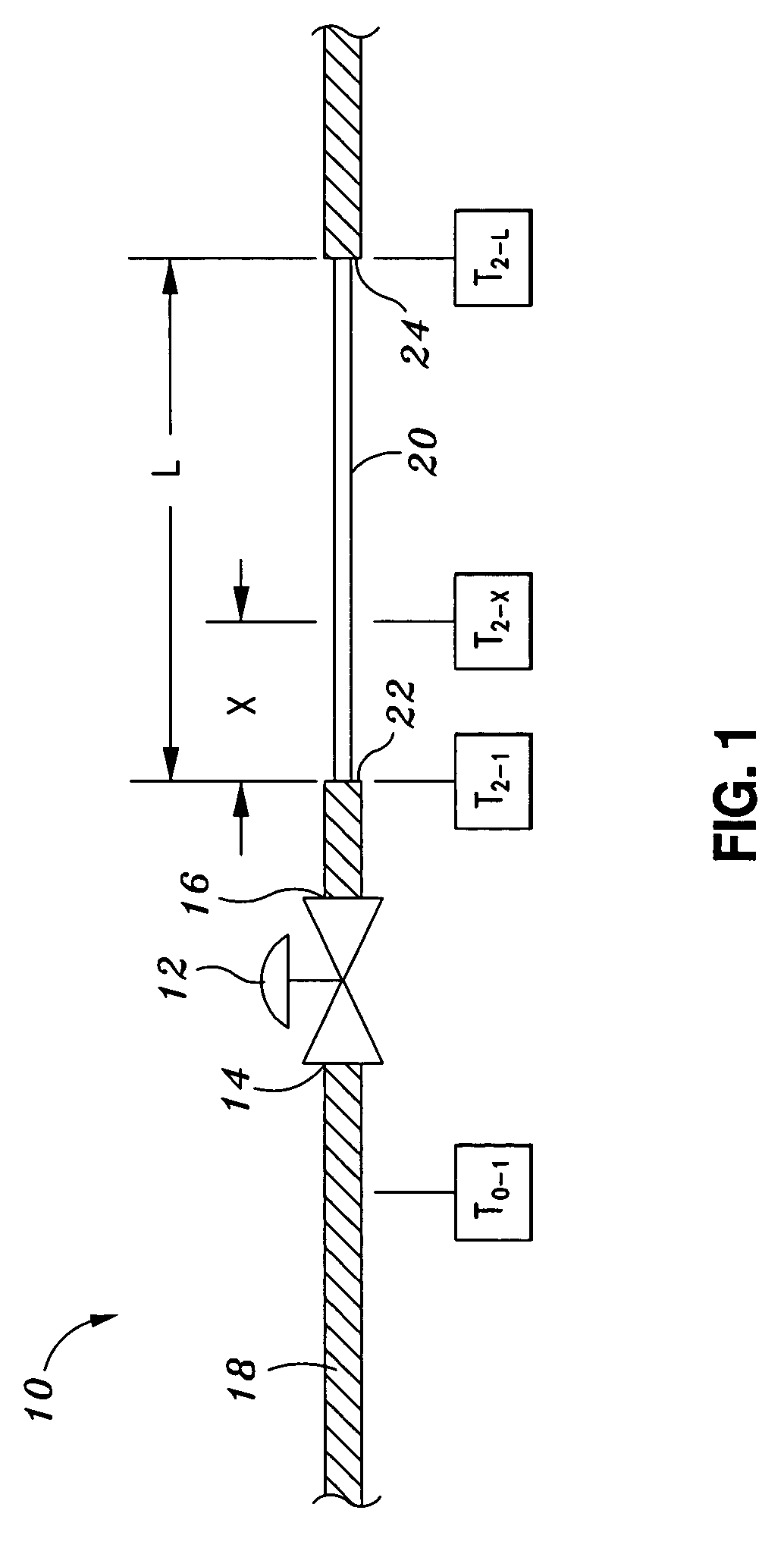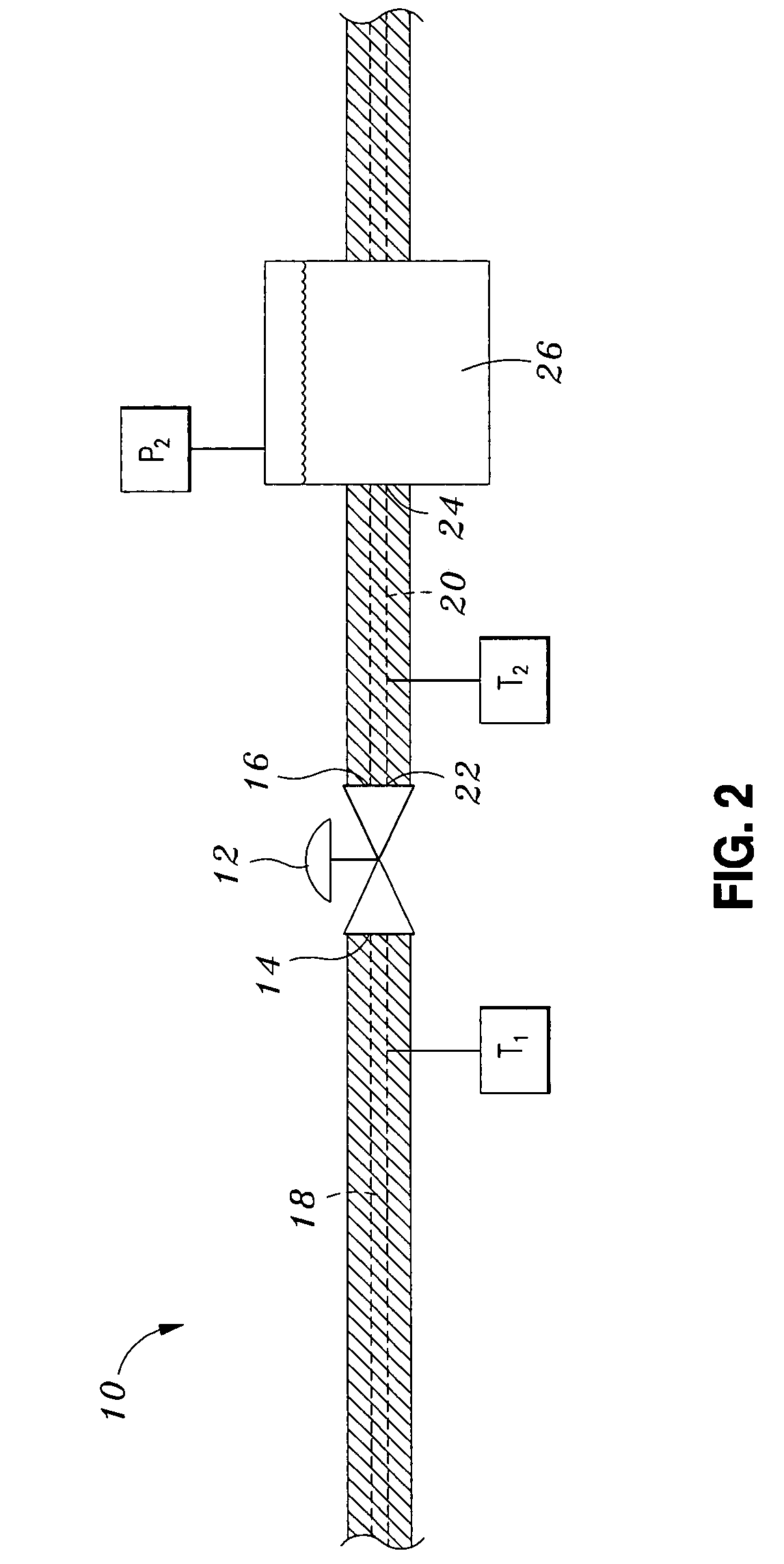Method of determining valve leakage based on upstream and downstream temperature measurements
- Summary
- Abstract
- Description
- Claims
- Application Information
AI Technical Summary
Benefits of technology
Problems solved by technology
Method used
Image
Examples
Embodiment Construction
[0019]Referring now to the drawings wherein the showings are for purposes of illustrating preferred embodiments of the present invention only, and not for purposes of limiting the same, FIG. 1 illustrates a piping system 10 arrangement having a valve 12 interposed between a first pipe section 18 and a second pipe section 20. As can be seen, the valve 12 has an inlet 14 and an outlet 16. The piping system 10 of FIG. 1 is arranged for detecting leakage of the valve 12 and measuring the leakage flow rate Wleak of the valve 12 when the fluid flows through the valve 12 in a single-phase flow of a gas or steam. In single-phase flow, the underlying principle upon which the leakage of the valve 12 may be detected and measured is that the heat loss across a length of bare pipe located downstream of the valve 12 causes a decrease in the temperature of the leakage flow.
[0020]The piping system 10 of FIG. 2 is arranged for measuring the leakage flow rate Wleak through the valve 12 when the fluid...
PUM
 Login to View More
Login to View More Abstract
Description
Claims
Application Information
 Login to View More
Login to View More - R&D
- Intellectual Property
- Life Sciences
- Materials
- Tech Scout
- Unparalleled Data Quality
- Higher Quality Content
- 60% Fewer Hallucinations
Browse by: Latest US Patents, China's latest patents, Technical Efficacy Thesaurus, Application Domain, Technology Topic, Popular Technical Reports.
© 2025 PatSnap. All rights reserved.Legal|Privacy policy|Modern Slavery Act Transparency Statement|Sitemap|About US| Contact US: help@patsnap.com



